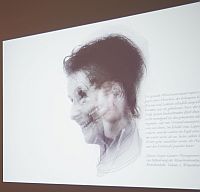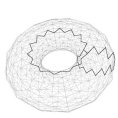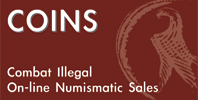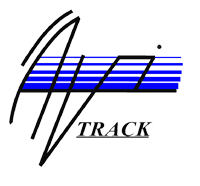|
Duration: 2020/02 - 2024/01
Description: In this innovative project by BOKU, Vienna University of Technology and Vienna University, we will observe the three-dimensional shape changes of cells in living leaves by combining high-resolution X-ray micro-tomography (μCT) and fluorescence microscopy. In order to take full advantage of the large data volume, new computer methods are being developed that automatically segment these images and track the change in the individual cells over time. This is intended to answer longstanding questions about stoma movements. A better understanding of the anatomical basis and the mechanical process of stoma movement will provide new approaches to regulating stomata and thus help to optimize the productivity and water consumption of plants.
Contact: Walter G. Kropatsch, Jiří Hladůvka
Researcher: TBA
Partner: BOKU, University of Vienna
with BOKU and
and with UniWien
|
Indiecam
Duration: 2015/01/10 - still running
Description: The aim of this project is to study the composition of image warping algorithms in order to devise a parallel solution involving image pyramids. For
panorama stitching of images from multiple cameras, the images need to be warped in order to compensate for differences in perspective and to guarantee
smooth transitions. We focus on decentralizing this warping process, so that it can be done inside each camera individually before assembling all
images for the final panorama.
Contact: Walter G. Kropatsch, Ines Janusch
Researcher: Hanna Huber, Majid Banaeyan
Partner: Raphael Barth
|
 |
|
Duration: 2015/03/24 - still running
Description: The marine annelid Platynereis dumerilii reproduces by external fertilisation and is semelparous,
meaning that it spawns only once in its lifecycle. To maximise reproductive success these worms synchronise their spawning events with the
lunar cycle and spawn primarily during new moon (Zantke et al., Cell Reports, 2013). In addition, P. dumerilii exhibit particular swimming
behaviours during spawning, which are collectively described as a ‘nuptial dance’. The nuptial dance is initiated by excreted pheremones,
stimulating male and female worms to swim in circles around one another and finally release sperm and eggs into the water.
The aim is to develop methods that enable 2D tracking of spawning worms from captured video and extract data
to quantify specified behaviours.
Contact: Walter G. Kropatsch, Nicole M. Artner
Researcher: Daniel Pucher
Partner: Stephanie Bannister
|
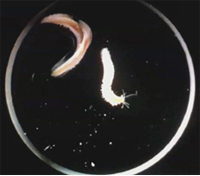 |
LBP pyramids
Duration: 2014/06/01 - still running
Description: In this project we show how topological categories can be used to identify and remove redundant structural
information in a graph representation of an image. Additionally we present two
concrete applications, namely an approach to obtain a minimal structural
representation of an image, and an image segmentation algorithm that preserves
regions in a hierarchy based on the amount of texture.
Contact: Walter G. Kropatsch, Ines Janusch
Researcher: Martin Cerman
Partner: Rocio Gonzales Diaz
|
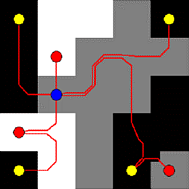 |
Lipizzan
Duration: 2015/01/10 - still running
Description: The Spanish Riding School with its Lipizzan horses is one of the most famous tourist attractions in Vienna. In breeding, it is desirable
to objectively evaluate the traits of a Lipizzan horse based on quantitative measurements. Unfortunately, traditional approaches of measurement
lead to a low repeatability rate due to pose changes of the horse and/or differences between the measurement techniques of different people.
The aim is to develop a representation of a 2D horse shape, which is independent of pose OR to develop an approach which is able to “normalize”
the current pose of a horse to a standard-pose.
Contact: Walter G. Kropatsch, Nicole M. Artner
Partner: Thomas Druml, Gottfried Brem
|
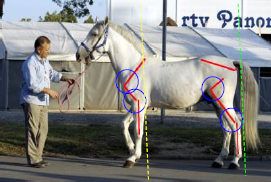 |
Smile
Duration: 2012/01/01 - still running
Description: Facial nerve paralysis is a paralysis of the muscles which are innervated by the seventh
cranial nerve, resulting in partial or total paralysis of the muscle tone. This causes
restrictions of the nerval actuation of muscles responsible for facial expressions which
causes asymmetric facial movement. A way to treat facial palsy is to apply neuromuscular
reconstruction methods to reestablish the muscle tone and symmetric facial
movement.In order to measure the progress quantitatively, physicians require clinical
measures extracted from those locations of the face which provide most information
about the facial expression. Small artifical markers indicated these locations. These
markers are placed manuallly on to the patient's face before the evaluation session begins.
During the evaluation session the patient is recorded while performing various
facial expressions. In order to evaluate the common condition the distance between two
marker positions ist measured. The software which performs the distance calculation
needs a manual annotation of the marker points. This task is currently performed by
the physician and can take several hours. Object tracking refers to the estimation of the
position of objects from an image sequence. Natural objects, such as the human face,
have a high potential for deformation and are characterized by an irregular texture. As
not only one, but multiple markers have to be tracked simultaneously, additional difficulty
is imposed by ensuring that markers that can be uniquely identified.
The aim of this project is to automate the tracking process and to establish markerless tracking of
facial features. The markers in the mouth regions could be replaced by methods of visual
speech recognition. An alternative to the markers around the eye region is the application
of methods used in drowsy driver detection In order to increase the accuracy of the
tracking, a reference frame will be denoted manually and then all other frames similar to
the reference frame will be marked as anchor frames. Due to the similarity, the tracker
can compute the
ow between two anchor frames independently. This approach prevents
error accumulation in lengthy performances.
Contact: Walter G. Kropatsch, Nicole M. Artner
Researcher: Barbara Koneczny
Partner: Chieh-Han Tzou
|
|
|
Duration: Duration: 2019/04 - 2019/08
Author: Aron Ingruber
Aim: The goal of this work was to develop a video inpainting method that produces high quality inpainting results while aiming for real-time performance.
|
 |







